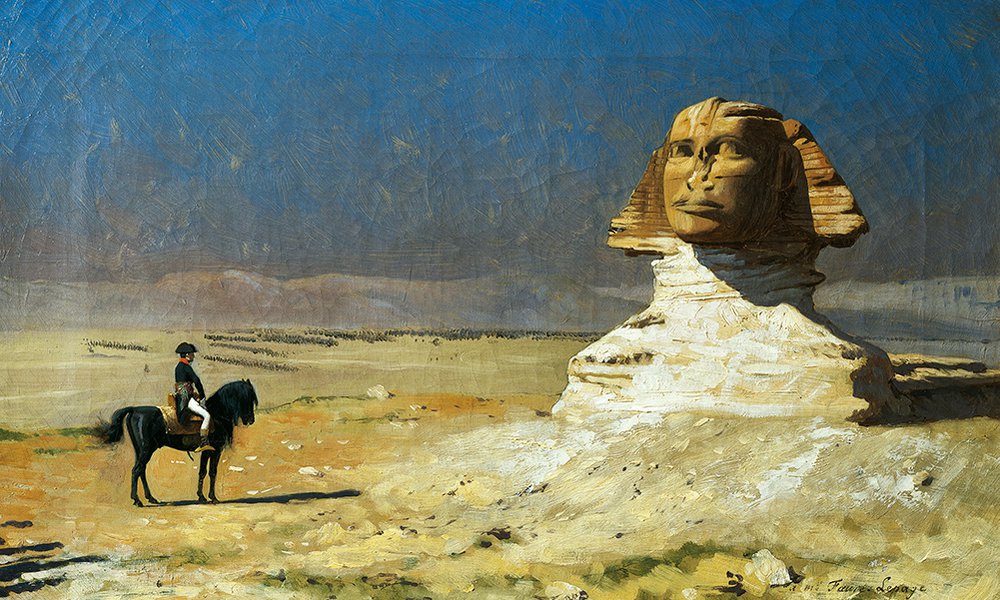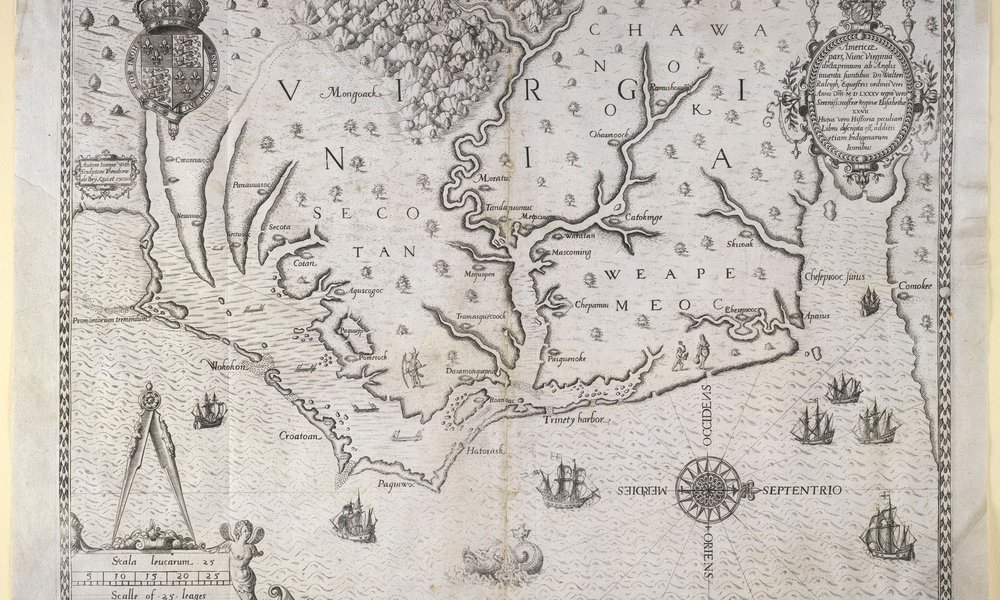How do we make gods visible in the human world?
by Professor Martin Kemp FBA
25 Apr 2018
There is a paradox in materialising the divine. At best, representations pander to our natural desires to ‘see’ at a reduced, or even base level. Why should God look anything like us, allowing for a few extra arms and legs? Does God look like Jesus or vice versa? Depictions of an ineffable god in any concrete guise raise what Mary Beard, in the ‘Eye of Faith’ episode of BBC Two’s Civilisations, calls the ‘idolatry question’. The stock answer to this is that the image facilitates devotion but should not be worshipped in itself, a distinction that is more easily made than sustained.
Representations of gods
If, as most monotheistic religions of more recent times have claimed or inferred, God exists in another dimension, in an ineffable realm beyond the grasp of our earth-bound senses, can we bring the nature of God into our purview through seen and heard representations of a material kind?
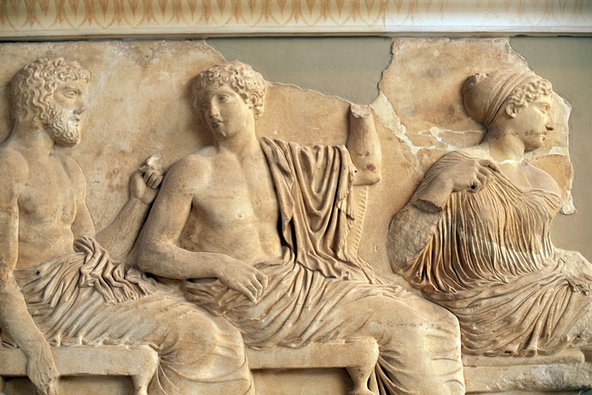
Parthenon frieze depicting Poseidon, Apollo, Artemis and Athena, from left to right, Greece, Greek civilisation, 5th century BC. Athens, Moussío. Credit: DEA / ARCHIVIO J. LANGE / Contributor/Getty Images
For Greece, Rome and ancient Egypt, plural gods are conceived – aside from being endowed with immortality and magic powers – as just like us. And that includes bad behaviour. In the Parthenon, Athena is sublimely majestic, but not ineffable, and the Christ-Apollo who slowly emerged from the constrained early Christian imagery owes not a little to the human gods of the ancient Mediterranean.
The idolatry question
In resolving the ‘idolatry question’, the doctrine of the incarnation is a particularly nifty move. God seems to have resolved the problem of embodying divinity in visible form, and in the Eucharist, we are allowed to ingest Christ’s body and blood. However, that resolution only seemed to be so, as centuries of profound disputes have borne witness.
But, Islam stands out in how the ‘idolatry question’ can be solved. Almost alone of world religions – with the major exception of Christian iconoclasts and Puritan sects – Islam maintains an eschewal of direct representations. This sustained ability to resist the gravitational force of visual embodiment is truly heroic. Instead, what became visible in Islam is the word, the word of the Quran.
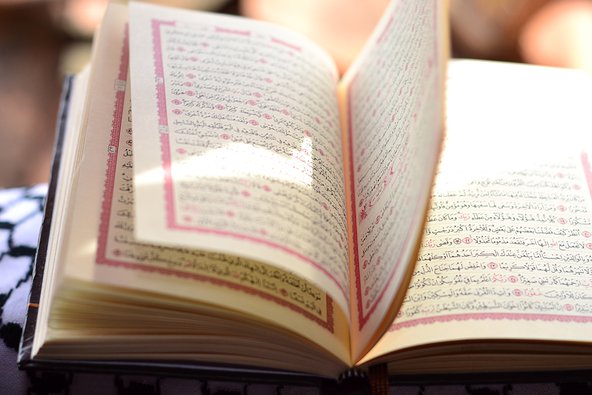
Holy book of Qur’an. Credit: Fajrul Islam/Getty Images
Light as a representation of the divine
Where Christianity and Islam come together, though, is visually, through light. A Christian miracle or vision is rarely devoid of a burst of divine illumination and in Islam, light is the metaphor for God. It is signalled most clearly in the hugely prestigious, technically sophisticated and beautiful mosque lamps, which are inscribed with texts extracted from the account of God as light in the Quran, “God is the Light of the heavens and earth”. Similarly, the identification of light with ultimate goodness of the Christian god is insistently signalled in the Bible in the first act of his creation of the cosmos: “God saw the light, that it was good: and God divided the light from the darkness”.
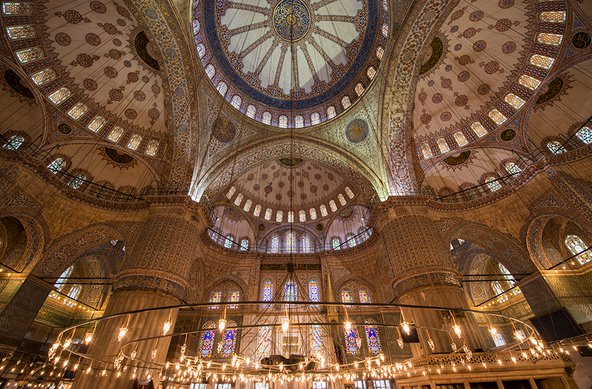
Worship of the image itself
The episode also raises the question of the worshipers’ participation when confronted by whatever kind of imagery is used. The poles range from meditative contemplation - quiet, sustained and transcendental - to the kind of mass rapture evoked by the annual Easter procession of the Madonna at La Macarena in Seville. The Madonna, weeping and bejeweled, comes alive in the eyes of the faithful. Both the contemplative and fervent modes inevitably involve some measure of overt worship of the image itself, albeit in very different ways.
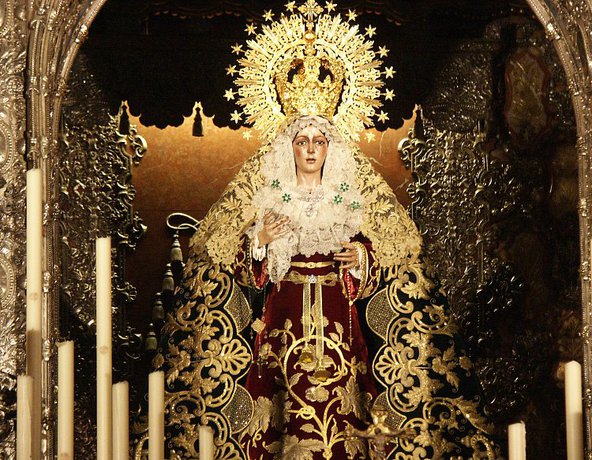
Virgen de la Macarena, La Esperanza, the weeping statue of the Virgin Mary. Credit: © 2005 Mary Ann Sullivan.
The style of filming, with the restless cutting and panning that is now the norm in this age of short attention span, stands in the sharpest contrast to the slow mode, while working well with the dynamics of collective fervour. There is a strong sense that the medium, or at least the way the medium is now used, transforms the message. In a further 50 years’ time, I imagine that our style will look at least as mannered as that of Clark’s Civilisation.
Professor Martin Kemp is a Fellow of the British Academy and is Emeritus Research Professor in the History of Art at Oxford University, Honorary Fellow of Trinity College, Oxford and Honorary Fellow of Downing College, Cambridge. He is also the author of Living with Leonardo: Fifty Years of Sanity and Insanity in the Art World and Beyond.
